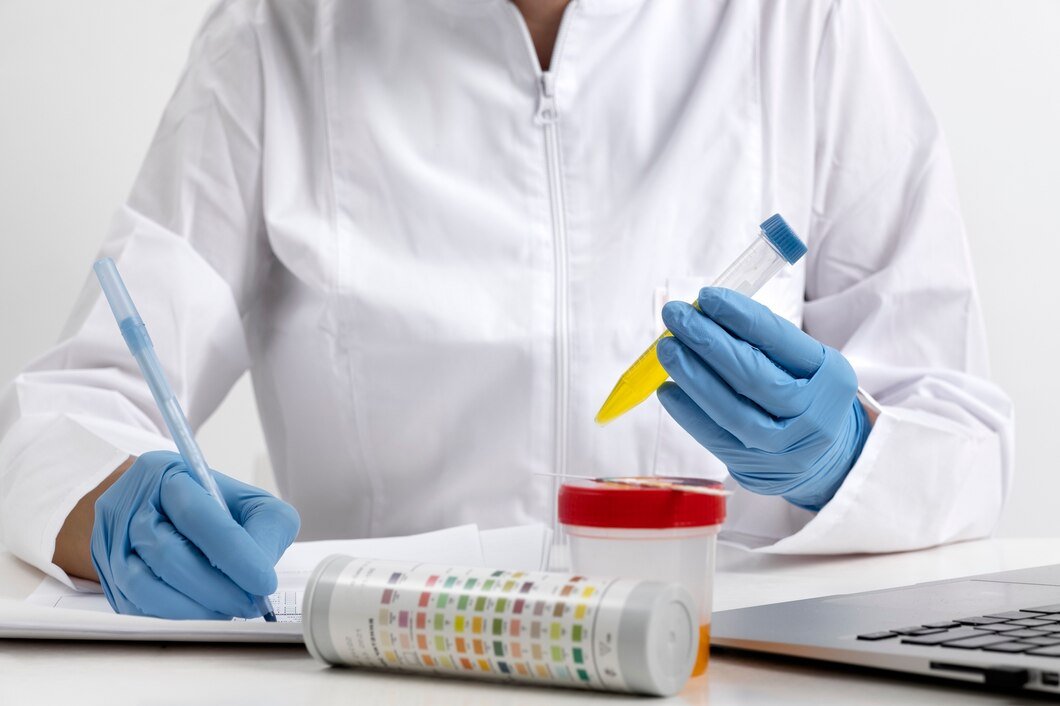When it comes to running a lab or performing diagnostics, few things can be as frustrating as when control reagents don’t behave as expected. One of the common problems technicians encounter is when Hema FG control doesn’t turn blue. The expected color change is a key part of the test, so when it doesn’t happen, it raises immediate red flags. If you’ve found yourself in this situation, don’t panic! This post will walk you through why the control might not turn blue and what you can do about it.
Why Is It Important for Hema FG Control to Turn Blue?
In various diagnostic tests, Hema FG control is used as a quality control measure to ensure the equipment and reagents are working properly. The color change—typically from clear or another hue to blue—is a sign that everything is functioning as it should. If the Hema FG control doesn’t turn blue, it could mean the test is compromised, leading to inaccurate results. This can be especially critical in medical diagnostics, where lives may depend on accurate data.
Common Reasons Why Hema FG Control Doesn’t Turn Blue
There are several reasons why the Hema FG control may fail to turn blue. Some are simple and easily fixable, while others might require more careful inspection or replacement of components. Here are the most common causes:
1. Expired or Contaminated Reagents
Reagents have expiration dates for a reason. If you’re using expired reagents, they might not behave as expected, including the color change. Additionally, contamination could render the reagents ineffective. Always check the expiration date before use, and ensure proper storage and handling to avoid contamination.
2. Improper Storage Conditions
Hema FG control and other reagents need to be stored under specific conditions, usually refrigerated. Exposure to heat, light, or incorrect temperatures can degrade the chemicals and prevent the control from turning blue. Make sure you’ve followed all storage guidelines to the letter.
3. Incorrect Concentration or Dilution
Sometimes, a simple dilution error can cause the control not to turn blue. If the concentration of the reagent or sample is too low, the chemical reaction required for the color change may not occur. Double-check the instructions and ensure that all dilutions have been done accurately.
4. Faulty Equipment
If your equipment is malfunctioning, it may not be mixing or heating the reagents properly. Check the machinery for any errors or malfunctions. Calibration might be necessary to get things back on track.
5. Insufficient Mixing
Proper mixing is crucial for many chemical reactions, including those in diagnostic tests. If the sample or reagent isn’t mixed thoroughly, the chemical reaction may not occur as expected, resulting in the control not turning blue. Always ensure the sample is well-mixed before starting the test.
6. Expired or Faulty Control Sample
Just like reagents, the control samples themselves can go bad over time. If you’re using an old or improperly stored control sample, it may not behave as it should. In this case, you may need to replace the control sample with a fresh one to get the desired color change.
Steps to Troubleshoot If Hema FG Control Doesn’t Turn Blue
Now that we’ve covered the potential reasons, let’s get into some practical troubleshooting steps.
1. Check Expiration Dates and Storage Conditions
The first thing you should do is verify the expiration date of your Hema FG control and reagents. Then, confirm that they have been stored according to the manufacturer’s guidelines.
2. Re-run the Test
Sometimes, errors happen during the preparation or execution of the test. Re-running the test with fresh reagents and a new control sample might resolve the issue.
3. Ensure Proper Mixing
Before starting the test again, make sure everything is thoroughly mixed. This includes the control sample, reagents, and any solutions you’re using.
4. Check the Equipment
Inspect the equipment you’re using for any malfunctions. If you suspect a calibration issue, contact the manufacturer or a technician to ensure that your equipment is operating correctly.
5. Consult the Manufacturer’s Guidelines
If none of the above steps work, it’s time to consult the manufacturer’s manual or support service for further instructions. Sometimes, specific issues are covered in the troubleshooting section of the manual.
6. Replace Reagents or Control Sample
As a last resort, consider replacing the reagents or control sample entirely. If they are contaminated or expired, nothing else will likely fix the issue except fresh supplies.
Preventing Future Issues
To avoid running into this problem in the future, here are some best practices you can follow:
- Keep an eye on expiration dates: Rotate your stock to use older items first and always check dates before use.
- Store reagents properly: Follow the manufacturer’s instructions for storage to maintain the integrity of the reagents.
- Maintain your equipment: Regularly service and calibrate your diagnostic equipment to ensure accurate results.
- Train your team: Make sure everyone using the equipment and reagents is properly trained to avoid common mistakes.
Conclusion
When Hema FG control doesn’t turn blue, it can be frustrating, but understanding the root causes and following a logical troubleshooting process will usually get things back on track. Whether it’s expired reagents, faulty equipment, or improper storage, identifying the issue early is the key to fixing it and ensuring accurate test results.
FAQs
1. What should I do if my Hema FG control still doesn’t turn blue after troubleshooting?
If you’ve tried everything, including replacing reagents and recalibrating equipment, contact the manufacturer’s support team for additional assistance.
2. Can using expired reagents cause my Hema FG control to not turn blue?
Yes, expired reagents can lose their effectiveness, which can prevent the expected color change from occurring.
3. How do I know if my equipment is the problem?
Look for error messages on the machine or contact the manufacturer for a diagnostic check. Faulty or uncalibrated equipment can easily cause problems with the test.
4. Can storage conditions affect the Hema FG control?
Absolutely. If reagents or control samples are stored at incorrect temperatures, they can degrade and fail to produce the expected results.
5. Is it possible to fix contaminated reagents?
No, if your reagents are contaminated, they should be discarded and replaced with fresh stock.











